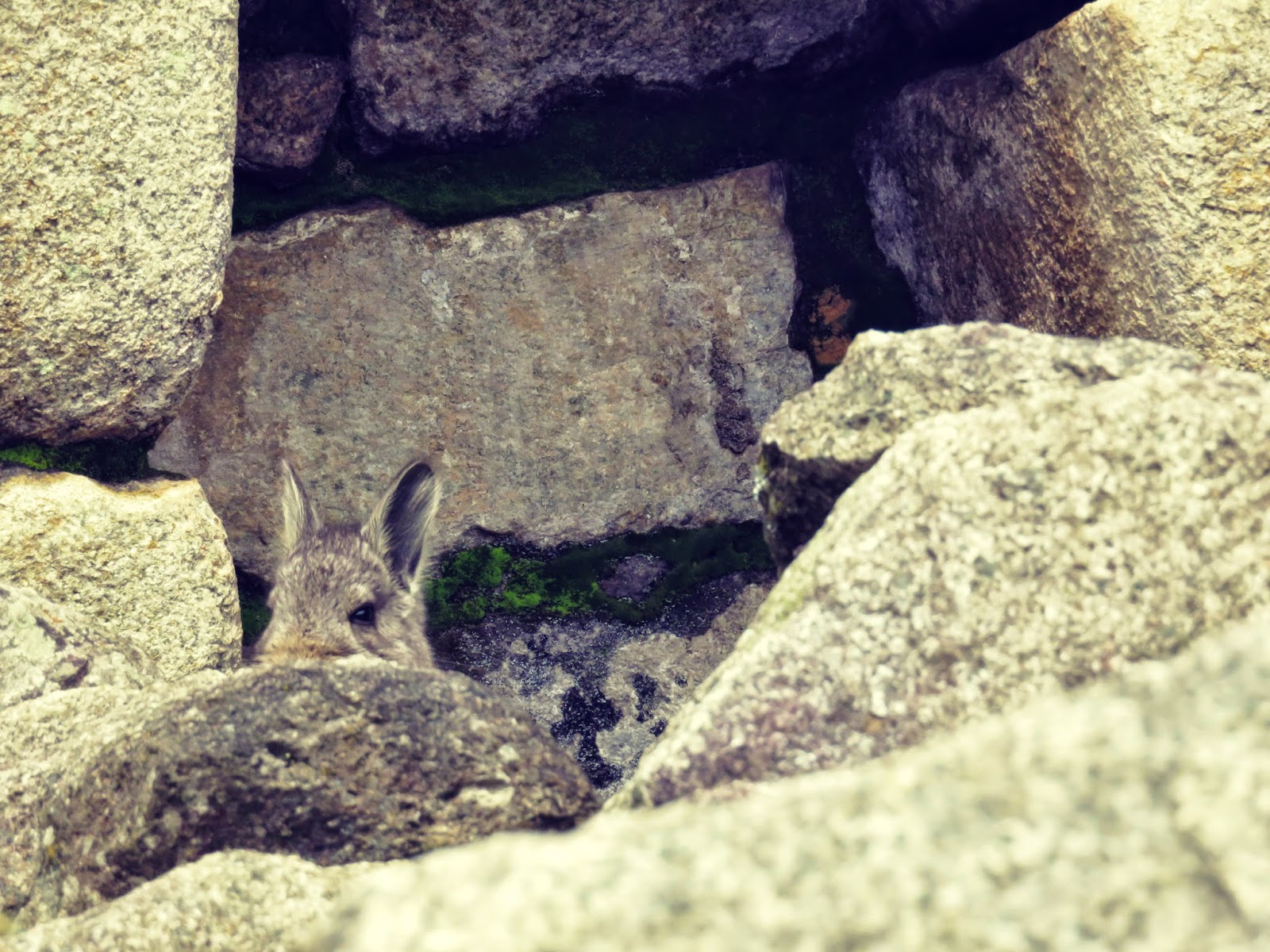How misty was it?
It rained so much that we were not sure we would see anything.
Fortunately it cleared after arriving and it is breathtaking.
According to one theory, Machu Picchu was a place for Pachacuti and his royal court, or panaca, to relax, hunt, and entertain guests, largely based on a sixteenth-century Spanish document that referred to a royal estate called Picchu. Why here? Because there are water springs.
Inca walls had numerous design details that helped protect them against collapsing in an earthquake. Doors and windows are trapezoidal and tilt inward from bottom to top; corners usually are rounded; inside corners often incline slightly into the rooms; and "L"-shaped blocks often were used to tie outside corners of the structure together. These walls do not rise straight from bottom to top, but are offset slightly from row to row. The roofs were thatched and tied on with ropes made from llama skins.
Inca terraces. They had to eat??
The terraces were used chiefly to drain and syphon the water from rain, as well as to hold the mountain in place. Each terrace was multi layered: first top soil, then dirt, sand and finally stone chips. This meant that water which sat on the terraces would sift downward into the mountain, as opposed to overflowing and running down the mountain. It is why you do not see water gushing down. I always wondered why not given the amount of rain especially on this day when it had rained so much.
Details of the stonework. Originally the house walls were rendered.
There are llamas
And it's a chinchilla.
A theory posed by archaeologist and anthropologist Johan Reinhard suggests that Machu Picchu occupied a special place in the "sacred landscape" of the Inca. For example, Machu Picchu is built atop a mountain that is almost completely encircled by the Urubamba River, which the Inca named the Vilcamayo, or Sacred River. Reinhard also pointed out that the rising and setting of the sun when seen from certain locations within Machu Picchu aligns neatly with religiously significant mountains during solstices and equinoxes.
The mountains form the "V" shapes that allow the sun to come through so important for the religious Inca's.
The Inti Watana stone the Inca believed the stone held the sun in its place along its annual path in the sky. The stone is situated at 13°9'48" S. At midday on 11 November and 30 January the sun stands almost above the pillar, casting no shadow at all. On 21 June the stone is casting the longest shadow on its southern side and on 21 December a much shorter one on its northern side. Researchers believe that it was built as an astronomic clock or calendar.
This is what I found absolutely enthralling. There are two carvings.
You have to stand at a specific place to see the reflection of the sun. It is a clearer image than actually looking at the sun itself. I was so pleased with this photo.
You have to stand at a specific place to see the reflection of the sun. It is a clearer image than actually looking at the sun itself. I was so pleased with this photo.
The sculpture carved out from the rock bottom of the sun temple is interpreted as "Water mirrors for observing the sky". Tourist guides also talk about the "Eyes of Pachamama" (Mother Earth).
They have restored some bits
It really has it's own atmosphere.
The site offered a natural quarry which was used to construct over 200 buildings. The stones harvested from this quarry were lined up, and shaped to perfectly fit together in a manner more sturdy than mortar would have. The Inca also used the stone chips in their construction and as a method to avoid mud and landslides, as well as flooding.
I did not go up to where you get the classic shot of Machu Picchu as you needed an extra ticket but I actually prefer the detailed shots.
Some interesting facts: there are some doorways that are very tall because the Inca king was always carried. There is a problem with soil erosion and the numbers of tourists is an issue. From next month they will limit the numbers of tourists entering at one time and they will only be allowed to be on Machu Picchu for two and a half hours.






















Now I have finally 'seen' Machu Picchu! Thank you!!!
ReplyDelete